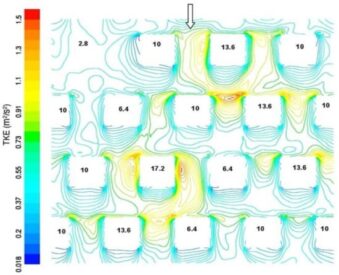Urban Air Mobility Needs a New Wind Flow Model to Fly Right
From Chicago to Wellington, wind flows will challenge UAM operators

The urban canopy layer (UCL) and the urban boundary layer (UBL) substantially affect wind flows UAM operators need to consider as they maneuver their aircraft in the inner city. (Illustration copyright and courtesy Journal of Applied Meteorology and Climatology)
In their paper, “Review of Wind Flow Modelling in Urban Environments to Support the Development of Urban Air Mobility, aerospace researchers D.S. Nithya, Giuseppe Quaranta, Vincenzo Muscarello, and Man Liang, reviewed the current (deficiency of) existing data of wind flow modeling in urban environments with an eye toward enhancing urban air mobility (UAM) operations as this new mode of transportation increasingly integrates into cities’ daily flight operations in the coming years.
Published in the April 2024 issue of Drones, the team uses microscale wind modelling to study atmospheric dynamics, weather forecasting, and turbine blade load, among others factors to best estimate and forecast wind flow modelling methods. The scientists use a compare-and-contrast study of the methods which are currently used in the wind engineering and atmospheric sciences within the context of wind flow conditions.
No one wants to be gone with the wind
The research team, comprised of scientists from Italy’s Politecnico di Milano and Australia’s RMIT University, recognized the challenges facing UAM operators in an environment where they will be operating at lower altitudes than current commercial aircraft operations and the unique wind flows posed by city skylines as diverse as Chicago (aka “The Windy City”) or Wellington, New Zealand.
The team also took account of the fact that the UAM and eVTOL vehicles currently undergoing design, manufacture, and certification substantially vary in size, configuration, and weight. They also differ in the ways their electric propulsion systems distribute energy and the degrees to which they will, or will not, be autonomously operated. These differences can impose substantially more safety risks, including trajectory deviation, loss or difficulty in control, and even the rapid deterioration of battery charge. All of these factors could result in operational delays, decreased passenger comfort, and even some risks which are, as yet, unknown.

Illustration of urban environment from above, where squares equal buildings and the numbers equal their height in meters. (Illustration courtesy and copyright Boundary-Layer Meteorology)
Time, space, and wind
The study revealed a host of factors which impact urban wind flow. These include: diurnal variations, the Coriolis effect, geographic positioning, topography, surface roughness, flow incidence angle, building and street configurations, building aspect ratios, roof shapes, and building heights. Jointly, the characteristics uniquely form the wind flow characteristics with the urban boundary layer (UBL). Consequently, wind velocity and fluctuation components frequently produce spatio-temmporal variations, and complex flow patterns different than those which pilots typically experience at higher altitudes. These variations only reinforce the need, the authors say, for more study of this unique flying environment and prompt a need to place more sensors on different sides of buildings and at different heights.
The answer is blowin’ in the wind
Optimal wind flow modeling, the group discovered can be broken into temporal and spatial evaluations. While the current research is disparate in its approach and conclusions, integrating existing methods and developing new ones will lead to better, more efficient wind flow models for the adoption and implementation of UAM worldwide.
Stay up-to-date with all things eVTOL, UAM, AAM, and UAVs.
Subscribe to AeroCar Journal today.
#urbanairmobility #urbanwindflowmodelling #urbanwindforecasting #urbanwinddata #eVTOLcertification #UAM operation #uam #aam


